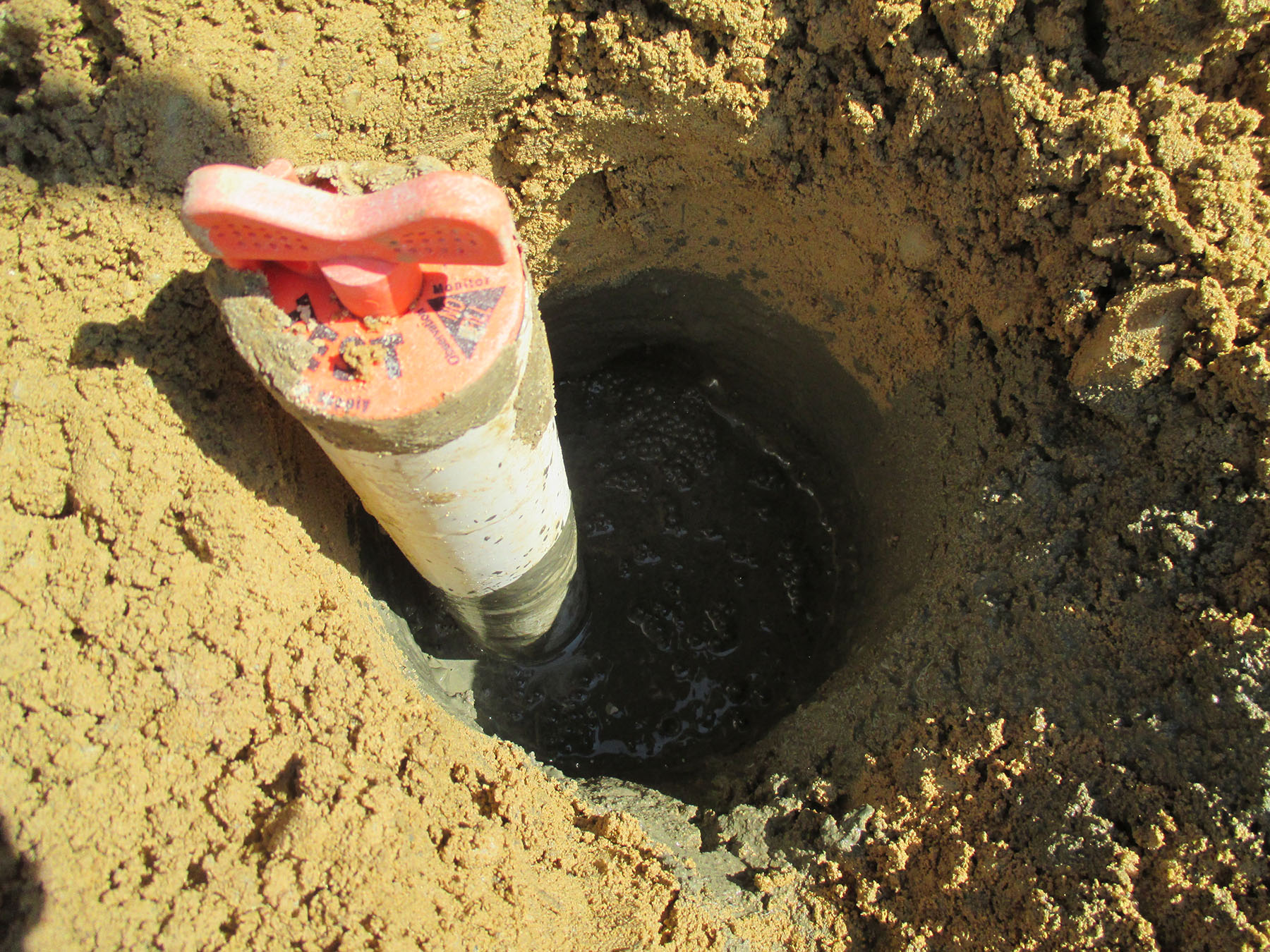What Are Monitoring Wells and How Are They Used in Environmental Investigations?
Monitoring wells are installed into the groundwater table below sites that may be environmentally impacted from releases of petroleum products or chemicals. Monitoring wells are typically constructed of polyvinyl chloride (PVC) or stainless steel. The specific design and construction details of monitoring wells varies from site to site. Similarly, site-specific features such as depth to water and geology will affect the number and locations of wells in a network.
The Purpose of Monitoring Wells
Monitoring wells are often installed as a way to sample groundwater in order to analyze its chemical, biological, or physical properties. Common uses of monitoring wells include:
- Determining the nature and extent of site contamination
- Long-term monitoring of a site that is known to be contaminated
- Plume migration tracking
- Site remediation
Where Monitoring Wells Are Installed
Monitoring wells can be utilized in a number of different sites. In the environmental field, monitoring wells are often found at:
- Phase II Environmental Site Assessments (ESAs)
- Spill sites
- Superfund sites
- Brownfield sites
Monitoring Well Installation, Development, and Sampling
Monitoring wells are advanced into the groundwater table using various drilling technologies including:
- Sonic
- Water rotary
- Mud rotary
- Air rotary
- Direct push
- Solid stem auger
- Hollow stem auger
Once the well is installed it must be properly developed. Well development involves removing quantities of water while assessing the quality of the removed water until it reaches predetermined parameters, at which point the well can be sampled. By developing the well the natural hydraulic flow is enhanced within the geological formation that the well resides in. Additionally, developing a monitoring well removes many materials that may obstruct sampling or alter sampling results.
Once installed, monitoring well networks are typically gauged and sampled on a regular basis. Typical monitoring and sampling intervals used are monthly, quarterly, and annually. These intervals are specified by local, state, and federal regulatory agencies who also receive reports based on lab and field data in order to make decisions about these sites such as additional remediation or closure.
If you believe your property may need a groundwater monitoring program or monitoring wells installed, contact Walden Environmental Engineering at 516-701-1681.

Click here to watch Walden’s video on monitoring well installation, and here to read about our site investigation and remediation services. Contact us at 516-701-1681 to learn more!
